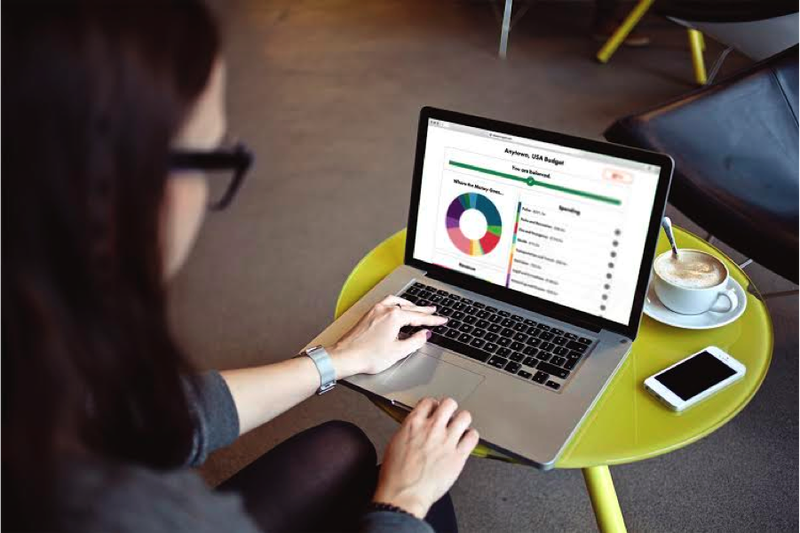OpenGov Voices: Bringing understanding and engagement to public budgets

Creating a budget is one of the most important tasks of government, but citizens are more disconnected than ever from the public budgets that direct large chunks of their personal income and pay for services they may or may not like.
The 2012 Census of Governments counts 89,005 public budget entities in the United States, including the federal government, 3,031 counties, 19,522 municipalities, 16,364 towns, 12,884 school districts and 37,203 special purpose districts (utility, fire, police, library, etc.). That’s a whole lot of public budgets for citizens to care about – or ignore.
Public entities have different requirements for public input in the budgeting process, ranging from minimal posting of a budget document to public referendum. Efforts to educate constituents on the budget also vary, but often rely on ineffective methods such as sharing the budget via documents that rival “War and Peace” or public meetings where the usual citizens take three minutes at the mic.
Some officials believe these efforts are the best they can do or afford. Others, including officials in the cities of San Antonio and Hartford, Conn., are pioneering multilayered engagement approaches to meet citizens at every corner possible.
Balancing Act app enables citizens to drill down in the budget
We believe governments can do much better, and we aren’t alone. Innovators in technology and public policy are trying to counteract political apathy with new engagement methods and tools that share the same goal: Educate citizens so they can develop better governments that improve society.
These high-touch and high-tech methods range from open data platforms that bring financial transparency to government, to participatory budgeting practices that bring groups of citizens together to allocate public dollars, to civic technology tools that both broaden and deepen citizen input through web- and mobile-based tools.
At Engaged Public, we created a web-based, interactive online budget simulator in 2007 to educate Coloradans on state budget issues and the impact of the Taxpayer’s Bill of Rights. As more public entities became interested in using the simulator, we set out to develop a next-generation tool.

Earlier this year, we launched Balancing Act, an interactive and easy-to-use online public budget simulator. With Balancing Act, citizens can explore revenue and spending categories, fashion their own budgets and share those priorities with public officials. Fully customizable for any kind of existing or proposed budget, Balancing Act goes several steps beyond the open data apps that simply display budget information in graphic or checkbook style.
Current users of Balancing Act include the cities of Hartford and San Antonio; the state of Colorado; and the Meridian Library District.
In Hartford, the city used Balancing Act to educate citizens participating in its People’s Budget meetings as the city faced a $49 million deficit.
“We have been organizing public engagement events about Hartford’s municipal budget for several years,” said Jackie McKinney, co-chair of Hartford 2000. “This year, we used Balancing Act for the first time. It made a big difference. Participants were able to spend much less time crunching numbers and much more time engaging with each other and with public officials around important issues. Balancing Act was a great step forward, and we plan to use it again.”
Companion app: Taxpayer Receipt
We’ve also created a companion tool to Balancing Act called the Taxpayer Receipt, which crunches the budget data used in the simulator against an individual’s basic demographic information to generate a receipt of where that person’s tax dollars landed.
In a segment on Colorado Public Radio, Colorado resident John Riecke took the Colorado Taxpayer Receipt app for a test drive. He typed in his income, age and details on his vehicle and fuel use, then pressed the “View Your Tax Receipt” button.
“Oh my, lots of details have popped up,” remarked Colorado Matters Host Ryan Warner, “Everything from what you’re spending on prisons to K-12 education to health care programs.”
So far, the Colorado Taxpayer Receipt has received more than 2,500 visits — almost twice the hits to the state budget simulation.
Participation is the new transparency in San Antonio
For some public entities, the educational process provided by Balancing Act is reason enough to use the app. When citizens walk the tough line – the balancing act – of making the budget balance, they are better able to grasp the larger picture of the budget’s priorities and impact. They have “aha moments” and are able to put budget expenditures into context with their day-to-day lives, which impacts their voting decisions.
For fiscal year 2016, San Antonio is engaging residents in a conversation about the budget through #SASpeakUp, which enables residents to join the budget conversation through in-person meetings, or from the comfort of their home on a computer or smartphone. All of the priorities and ideas gathered are then presented to the city council.
“We thought about it from the residents’ perspective, and saw that we needed to make the budget process more accessible and easier than ever to participate,” said Bryan Layton, assistant director for innovation. “Instead of just asking residents to come to us, we went to them (digitally and physically) as much as possible.”
The city’s interactive budget on Balancing Act is available to citizens in both English and Spanish.
“We heard back that it was easy to use, easy to understand and they liked the layout and design,” Layton said. “Our city council and city leadership was appreciative that we had this tool available for those residents that wanted to be a little more involved or who liked getting into the numbers more.”
Interested in writing a guest blog for Sunlight? Email us at guestblog@sunlightfoundation.com

